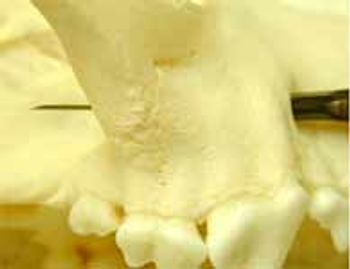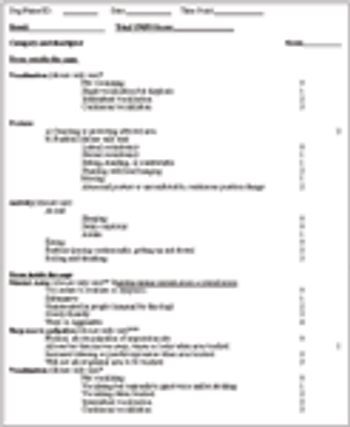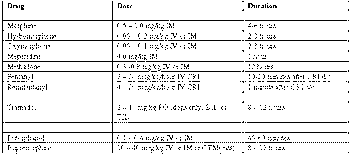
Many of our patients in veterinary dentistry are older or have compromised core body functions.

Many of our patients in veterinary dentistry are older or have compromised core body functions.

Nonsteroidal anti-inflammatory drugs (NSAIDs) are the most widely used analgesic drug class in human and veterinary medicine.

Opioids provide both analgesia and sedation.

There are four main goals for anesthesia in the ophthalmic patient.

There are a variety of options for providing analgesia to veterinary patients in the peri-anesthetic period.

The respiratory system is one of the most important physiologic systems that the anesthetist can affect during an anesthetic event.

The main considerations for anesthesia of the critical patient really are the same as for most other patients.

Nonsteroidal antiinflamatory drugs (NSAIDs) are commonly used in veterinary medicine for a variety of reasons including the management of acute postoperative pain and chronic pain associated with degenerative joint disease among other conditions.

Understanding how to design an anesthetic protocol is essential for the veterinary technician.

Once the dental prophylaxis is completed, the patient's mouth has been charted, and a full series of intraoral radiographs is ready for evaluation, some patients may have already been under anesthesia for over an hour.

The challenge of pain assessment in animals lies in the very concept of pain itself.

Because the entire CNS is heavily invested with opioid receptors that mediate central and spinal analgesia, the most effective class of analgesics is the pure agonist opioids, i.e. drugs such as morphine, hydromorphone, oxymorphone, etc.

The greek god "Morpheus" was the namesake for morphine. Morpheus was the god of dreams.

In addition to considering staffing, equipment and scheduling, the practice should look closely at the anesthesia protocols and applications currently employed within the practice.

Patients that present for ophthalmic surgery are often geriatric or pediatric, painful and anxious, and may present as emergency cases.

A review of some of the common misconceptions or outdated thoughts that can be found in small animal anesthesia.

Mean arterial pressure (MAP) is the driving force for blood flow (perfusion) through capillaries that supply oxygen to organs and tissue beds of the body.

When you administer anesthesia, make sure you completely document the process.

Preoperative epidural injection of local anesthetics and opioids provides excellent preemptive, multimodal intraoperative analgesia; reduces the concentration of volatile anesthetic required to maintain surgical anesthesia; and provides analgesia extending into the recovery period.

Clarification regarding an article from the June 2009 issue of Veterinary Medicine.

From a pain practitioner's standpoint, it's much better for a practice to provide more service to existing clients than try to compete for new ones when patients die before their time. That was one of two key take-home points Robert M. Stein, DVM, Dipl. AAPM, pain specialist and president of the International Veterinary Academy of Pain Management (IVAPM), offered CVC Kansas City attendees Sunday morning during his presentation, "A day in the life of a pain practitioner," part of the IVAPM Symposium at CVC Kansas City. Stein practices in suburban Buffalo, N.Y.
![ce286c5f-7f00-0001-15dd-418790ca5750[1]_flash-622532-1384496731347.jpg](https://cdn.sanity.io/images/0vv8moc6/dvm360/3867e4fe9be98510b3febc072f94638d00074526-150x150.jpg?w=350&fit=crop&auto=format)
IVAPM issues exam in conjunction with CVC in Kansas City.

Rabbits and rodents are popular pets in urban society because they require little space, are relatively easy to care for, and are a species with which the client can develop a bond.

Blocking the transmission of painful signals via nerve fibers is one of the most effective ways of managing pain.

In order to discuss the application of veterinary rehabilitation in pain management, it is important to understand what veterinary rehabilitation is.